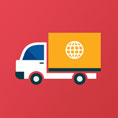How would you feel looking up into the sky and seeing your recent sneaker order descending into your backyard?
Cool, or uncanny?
For most of us, the idea of drone delivery sounds intriguingly advanced, innovative, and “awe-inspiring,” however, it can also leave us with burning questions like:
- How will my privacy be protected?
- Will my package make it safely to the right drop off point?
- What else are unmanned aerial systems capable of?
- What happened to good old mail delivery?
- When will drone delivery begin to dominate?
And these are all critical questions to ask, especially as Business Insider claims that the adoption of drones for delivery purposes is poised to take off over the next five years, and McKinsley & Company placed drone activity at roughly $1 billion as of 2017.

However, amid the buzz and controversy, it’s important not to forget that drone development companies like Amazon haven’t worked out all of the kinks yet – and there’s still a lot of work to be done before drones will be invading your backyard.
The Pros of Drone Delivery
There’s no denying that drone delivery has the potential to become a faster, cheaper way to meet consumer demands. Most notably, drones could solve the last-mile delivery problem – the slowest and most expensive part of deliveries.
What is the Last-Mile Delivery Problem?
The last mile refers to the final step of the delivery process – the package arriving at the purchaser’s door.
The problem with this last mile is that the final leg of shipment typically involves many stops, which is why you may have noticed your package takes a while to get to you even after you’ve received notice it has arrived in your city or town.

With drone delivery, however, a number of drones could be sent out from one stop, completing the last mile more quickly and efficiently.
But, the concept isn’t without flaw.
The Cons of Drone Delivery
While companies have begun to test and invest in drone delivery, many trials have failed. From calculating the precise location to drop to preventing hacking and preserving privacy, the technology isn’t yet sophisticated enough for mass production and service, nor have the proper protections and regulations been established.
“Not only are people unprepared for drones, but the infrastructure needed to accommodate small flying delivery vehicles also is missing.”
– Todd C. Frankel, The Washington Post
And while you may have seen some pretty impressive videos of drone air drops, it’s important to remember that:
- The test runs you’ve watched have been edited; it may have taken thousands of tries to get the right shot.
- The drones do not yet have full capacities to handle larger loads or survive changes in an uncontrolled environment.
- Drones are still largely unregulated. Should air rights matter? Many are still debating the issue.
Interesting Drone Products in Development
Aside from the above concerns, there’s no denying that the investment in drone delivery technology is intriguing. Take a look at some notable developments below:
Amazon Prime Air
Amazon has created a new service – Amazon Prime Air, a delivery system designed to safely get packages to customers in 30 minutes or less using drones. The UK trial has successfully delivered a Prime Air parcel, but there is still work to be done.
UPS
Over at UPS, test delivery trucks now communicate with drones via RF and 4G dual communication technology. With drivers tracking the drone at all times, the truck has become its own beacon, and the two can talk between the cloud to each other.
“When the regulations and the technology gets to a place that we need to be able to do it and be safe, we possibly want it on every vehicle.“
– John Dodero, VIP of Engineering, UPS
Flirtey
One of Flirtey’s primary missions is to save lives through the delivery of medical supplies and devices. However, they also plan to deliver food and packages. Flirtey has even tested delivering Dominos Pizzas in New Zealand!
Other Emerging Delivery-Tech Companies
But, drones aren’t the only delivery tech being researched. Check out these other emerging robot-delivery companies:
Robby
Robby Technologies has introduced a self-driving robot in response to the last-mile delivery problem. The size of a pet, Robby 2 has all-wheel drive capability.
Starship
Starship Technologies believes that robots with revolutionize neighbourhood deliveries, and their self-driving robots can carry items within a 3km radius.
The Drone-volution in Review
In a time where consumers want their orders to arrive directly to their doorsteps within minutes, the push toward near-instant gratification is expected to become more and more possible with robot and drone technology.
However, drones won’t be taking over delivery any time soon.
And at McKenna, we’re excited to learn more, but won’t turn a blind eye when it comes to asking important questions to protect the privacy and best interest of our clients as the technology advances.
Stay tuned!




